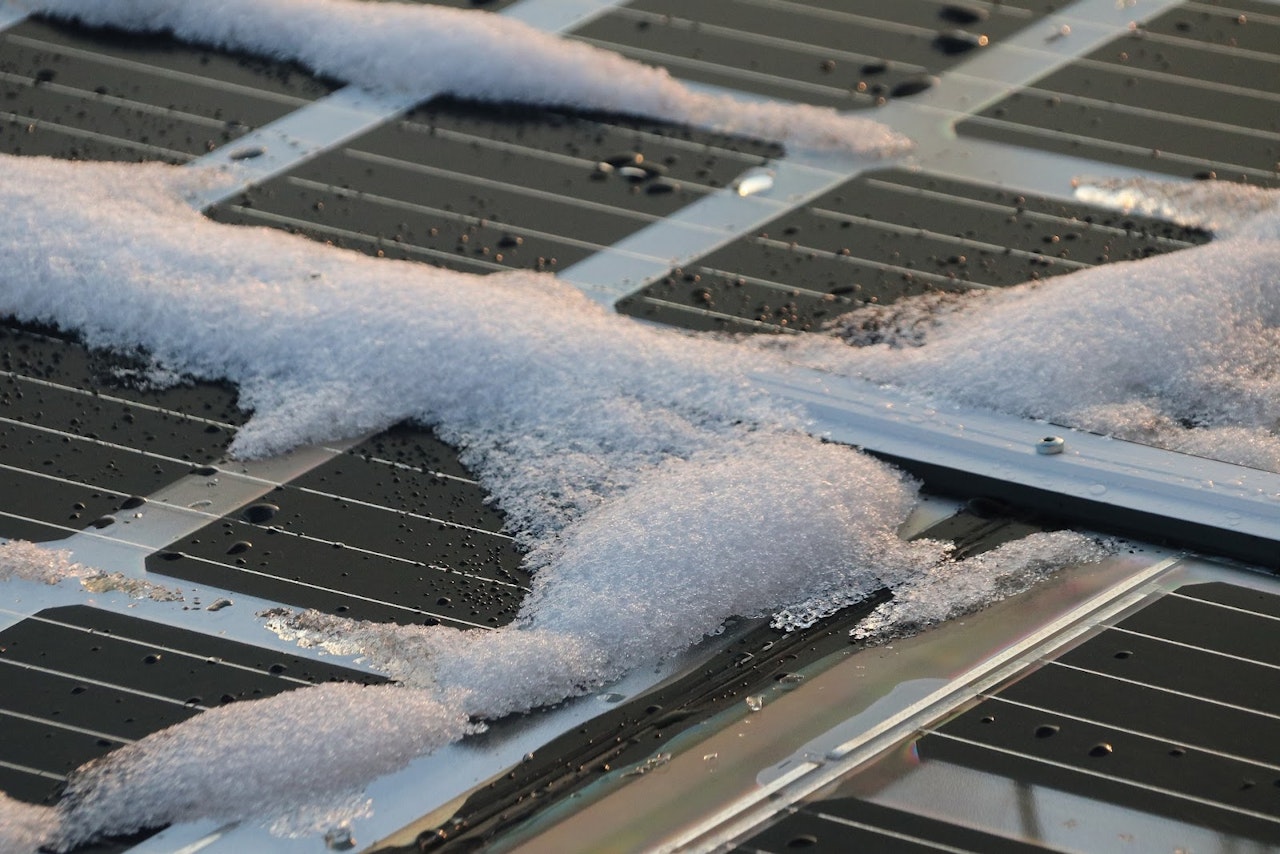- Solar energy blog
- Limiting shading losses to maximize solar power output
Limiting shading losses to maximize solar power output


Natalia Opie
Manager of Customer Success
Natalia Opie leads the Customer Success team for RatedPower. She is passionate for renewable energies and their role within the global environmental transition and has a thorough understanding of the solar industry, backed by her BSc in Energy Engineering, her MSc in Renewable Energy in Electrical Systems, and six years of experience partnering with clients of different countries to develop profitable, optimized assets.

Content
The output of a solar photovoltaic (PV) plant is affected by several factors, including temperature, irradiance, the configuration of the panels, and shading. Solar energy systems generate electricity from sunlight shining onto a solar panel module, so if a module is shaded, the obstruction prevents it from generating at full output.
In this article, we look at:
What are shading losses?
What causes shading?
And how can RatedPower help you to account for shading losses in your solar project?
Knowing the answer to these questions will enable you to get the maximum efficiency out of your PV installation.
Learn how technology can help your PV team design and engineering faster. Read the solar software buyer’s guide.
What are shading losses?
Shading losses are the losses in electricity output when an obstruction blocks solar PV panels from receiving direct sunlight. Shade on one PV module reduces the electricity generation from a whole string of modules.
What causes shading? There are several different types of obstruction that can block panels. There can be physical obstruction:
trees
poles
buildings
ice and snow
structures where the modules are installed on
adjacent racks
Shading can also be caused by topographical obstructions like hillsides or mountains, known as far shading, and meteorological conditions so that passing clouds block sunlight and cell output declines.
Physical shading from objects is also known as near shading, while array shading occurs at the electrical level.
Near shading losses account for how much irradiance is blocked by other elements before it reaches the solar panel module.
Array shading losses refer to energy losses at an electrical level when part of a string of modules is shaded in an array and so cannot produce energy at full capacity.
Avoiding solar panel shading
While meteorological conditions have some impact on shading that cannot be avoided, there are technologies available that take better advantage of diffuse irradiance. But the main way to reduce array shading is to calculate the most efficient configuration of panels.
Calculating the impact of shading on electricity output takes into account the direction of the sun’s rays and the percentage of a string of modules that is shaded by the next row.
Tracker structures for solar panels are designed to adjust the angle of the panels to maximize their exposure to direct sunlight throughout the day as the sun moves across the sky. Using backtracking algorithms to control the positioning of the tracker systems limits near shading between rows as the panels move.
By contrast, fixed structures are static, so it is straightforward to calculate their exposure to irradiation and ensure there is enough distance between the rows.
If rows are too close together, the solar modules will not operate at the highest efficiency as they will be partially shaded. However, it is important to have the smallest distance possible to maximize the amount of energy production since the wide spacing between rows reduces the total number of rows that fit in a given area, reducing the total electricity production. A balance between the row spacing and the number of rows will enable you to make the most out of the equipment and the site area.

What does the future of energy yield modeling look like? Learn the main benefits for solar developers, EPCists and engineering teams of using an embedded EY tool in their PV design software. Watch the webinar.
If there are objects such as trees or buildings that cause obstruction, you can calculate how they will cast shade based on the angle of direct irradiance throughout the year and perhaps avoid installing panels in the shaded areas.
RatedPower tackles solar panel module shading
At RatedPower, we understand the importance of accurately calculating shading losses when planning utility-scale projects. We have recently launched an improvement to the way our platform estimates electrical shading losses.
The impact of partial shading on the production of well-designed utility-scale photovoltaic plants is minimal, since near shading appears during the moments of the day when the production is lowest. Moreover, most plants are designed in a way that guarantees shading will only occur during short periods of time in the day, or not at all if the plant uses backtracking.
A PV module is made up of solar cells connected in series. When one cell is shaded, it conditions the electrical behaviour of the whole module (as cells are connected in series working at the same current). In the same way, the affected module conditions the electrical behaviour of its string (as modules are connected in series working at the same current), and the affected string conditions the behaviour of the whole array (as strings are connected in parallel working at the same voltage). Given this scenario, an electrical mismatch takes place as some of the strings in an array are shaded and others aren’t.
It is not practical to model all cells individually. A common way to estimate the losses that are incurred under partial shading is according to the amount of strings that are being shaded. RatedPower follows a method where it will assume that the beam radiation that one shaded string receives is zero, and the actual energy produced by these shaded strings comes from the diffuse and ground-reflected radiation.
This assumption tries to reflect that, when a string starts to be shaded, the cells that are affected force the whole string to work at a lower current according to the radiation perceived by these cells.
Ultimately, the total losses due to near shading are factored in as linear losses that represent the radiation that is not perceived by the module, and electrical losses that represent the aforementioned electrical mismatch.

Shading losses in your PV system are deeply covered in the RatedPower energy yield methodology. Download it now.
This gives a more accurate result, especially in scenarios where there is a high level of shading and pitch distances are small.
When you upload a site to RatedPower it automatically creates a horizon profile, and you can check the effect of far shading from mountains and hillsides, the diffuse and direct irradiance, the incidence angle of the sun’s rays on the solar modules, near shading, and array shading based on where the racks are placed.
RatedPower software provides a tool to browse through different pitch distances and structures to model the amount of energy that PV plants will generate over their lifespan. Project designers and investors can base their decisions on the optimal distances between structures by checking which layouts yield more or less energy and the impact that will have on project revenue.
Choose RatedPower for your solar energy project
Shading on solar energy systems affects the electricity output of an installation, which has a direct impact on the revenues it can generate over the lifespan of the investment.
Rated Power can help you design the most efficient solar layout to limit shading losses and maximize energy output. Contact us today to find out more.
Latest stories
Related posts
Technology and engineering
Outsmarting congestion: How efficient solar design helps navigate Nordic grid limits
Learn how Nordic operators and solar developers are adjusting to tighter grid conditions and how policy and design decisions are keeping projects on track.
Updated 16 DEC, 25

Technology and engineering
The rise of ultra-thin perovskite solar cells
Learn about Japan’s $1.5B initiative to commercialize ultra-thin, flexible perovskite solar cells and how it could transform the solar landscape globally.
Updated 30 SEP, 25

Technology and engineering
The green hydrogen boom in LatAm
Latin America is emerging as a green hydrogen leader. Learn how LatAm countries are leveraging solar and wind power to drive green hydrogen production.
Updated 22 JUL, 25

- RatedPower
- Solar energy blog
- Limiting shading losses to maximize solar power output
 Watch a demo
Watch a demo Ask our AI Product Expert
Ask our AI Product Expert

